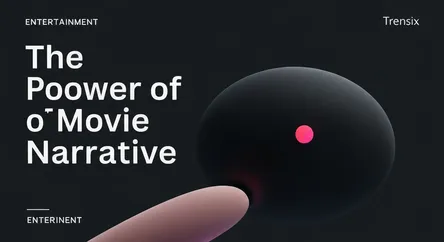Entertainment
The Power of Movie Narrative

Discover the art of narrative in film. Learn how storytelling, plot, and structure combine to create unforgettable cinematic experiences for audiences.
What is it?
In cinema, a narrative is the art of storytelling—the structured way in which events are presented to the audience. It's more than just the plot; it's the framework that includes character development, setting, theme, and the specific sequence of events that unfolds on screen. A film's narrative guides the viewer's journey, dictating the flow of information and emotional beats, from the opening scene to the final credits. Whether linear, non-linear, or interactive, the narrative is the essential blueprint that gives a movie its shape and meaning.
Why is it trending?
Discussions around narrative are trending as filmmakers increasingly experiment with unconventional storytelling techniques to stand out in a crowded market. The rise of streaming platforms has fueled a demand for content that challenges traditional structures, like the intricate timelines in "Everything Everywhere All at Once" or the mind-bending plots of Christopher Nolan's films. Audiences have become more sophisticated, appreciating complex, puzzle-box narratives that invite analysis and discussion long after the movie ends. This creates buzz and encourages repeat viewings, making innovative narrative a valuable asset.
How does it affect people?
Narrative fundamentally shapes the viewer's emotional and psychological experience. A well-crafted story builds suspense, fosters empathy for characters, and creates a powerful sense of immersion. It allows us to explore complex human emotions and societal issues from a safe distance, providing catharsis and new perspectives. The structure of a narrative—the build-up of tension, the climax, and the resolution—is designed to evoke specific feelings, making the film a memorable and impactful experience that can resonate with audiences on a deeply personal level.